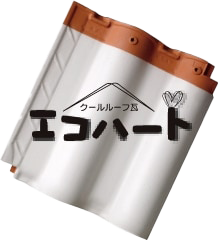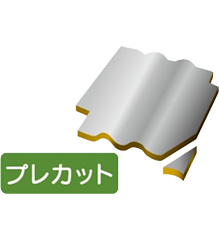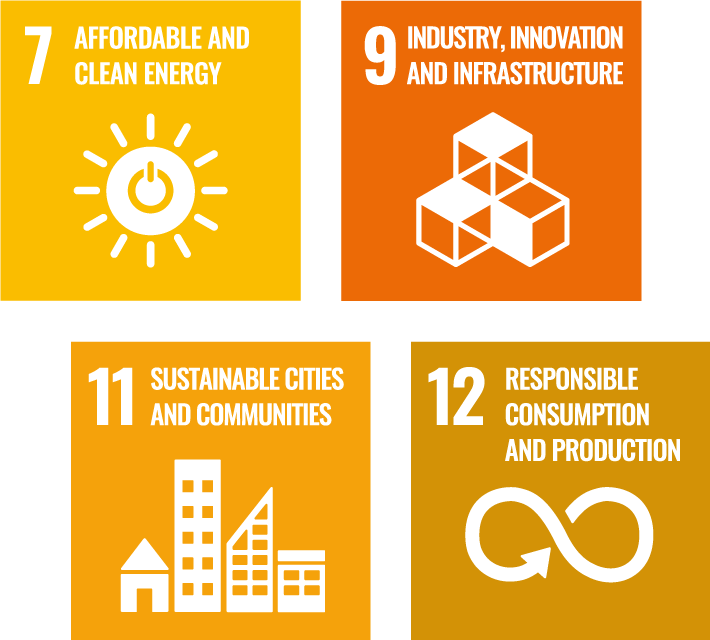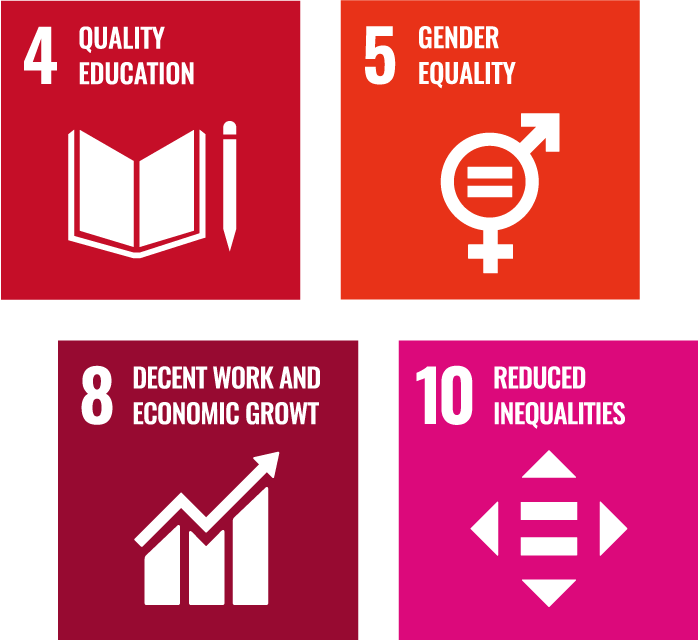
Product Development

We have succeeded with commercial production of “Eco Heart,” a “white kawara” that reflects more sunlight. A product of joint research with the Nagoya Institute of Technology, these kawara help mitigate the heat island phenomenon—a major global issue—bringing indoor temperatures back to normal while reducing utility bills. These kawara can lower energy bills while upholding global environmental considerations, all without any changes in normal daily life. Not only functioning as roof tiles, they also feature modern colors suitable for contemporary homes.
Production

The company is committed to recycling scrap clay generated during production as raw material, for example utilizing kawara that fail to meet standards during inspections as a resource. The out-of-spec kawara are collected and transported to the Aichi Prefectural Ceramic Tile Industry Association’s “chamotte” plant, where they are pulverized to a grain size of 0.5 mm or smaller. The raw clay material for kawara incorporates 3% to 5% chamotte. It is also used in other applications, including fine aggregates for secondary concrete products, water-permeable ceramic blocks, and attractive roadway pavement materials.
Distribution

A typical detached house construction site generates as much as 450 to 500 kg of kawara scrap clay. All of it was once considered industrial waste, but our company uses a “pre-cut process,” roughly cutting the kawara before shipping. Implementing this step has reduced scrap material at constructions site to about 100 kg, roughly one-fifth the conventional amount (according to Sansyu Noyasu research). This measure has also reduced the environmental impact (generation of CO2) in transporting material to construction sites. This comes to a reduction of 11,700 kg of CO2 emissions per year, an effect equivalent to planting 1,063 beech trees annually (according to studies by WasteBox Co., Ltd.). These are representative of the active efforts we are making to visualize reduction of our environmental impact and improve our environmental performance.

- We are striving to reduce our use of fossil fuels and greenhouse gas emissions through enhanced productivity and energy efficiency.
- We are making more effective use of the natural resources comprising our raw materials by improving production yields and reducing losses in raw materials.
- We recycle resources by mixing products that do not meet standards into new raw materials.
- We are contributing to the culture of Japanese housing by adopting, developing, and maintaining traditional clay kawara manufacturing techniques and products.
- We are contributing to more resilient housing through our sales of earthquake- and typhoon-resistant kawara and related products and educational efforts regarding these products.
- We are striving to wean society from the current consumer-oriented approach by supplying durable roofing materials.
- To reduce our CO2 emissions, we are making the shift from gasoline-powered vehicles and forklifts to hybrid vehicles and electric forklifts.

- Regardless of gender, our employees can take courses outside of the company and receive in-house training as we recommend reducing gender disparities in human resource development.
- We are increasing the percentage of women in managerial positions.
- We endeavor to develop local industries, generate employment locally, and work in harmony with the local community.
- We promote a work environment that prioritizes our employees’ health and safety. In promoting employee health, we encourage workers to reduce their smoking.
